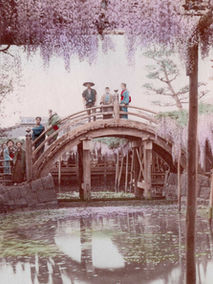Within the Chinese Imperial court of the Qing dynasty (1644–1912), women used hair ornamentation both as practical tools and as a way to communicate their position within the hòugōng zhìdù (rear palace system) [1]. By the early 20th century, hierarchical structure had governed the ranking of the emperor’s consorts for nearly two thousand years. Court dress followed strict regulations that denoted rank, and among women in the court, hairpins (zan 簪), which were visibly arranged in the hair, formed part of everyday attire [2]. These accessories were made from precious and semi-precious materials such as bronze, silver, gold, coral, ivory, kingfisher feathers, and jade.
Jade (yú 玉) is a stone that is made out of two different minerals: nephrite and jadeite. Of the two, white nephrite jade was especially prized within the imperial court, with examples dating as far back as the Chinese Neolithic period (c. 3000–2000 BCE). By the late 18th century, however, vivid green jadeite imported from Burma (now Myanmar) had sidelined nephrite to become the preferred type. The most sought after jade pieces have a soft lustre and appear transparent when held up to light. Within his writings, the philosopher Confucius (Kǒng Fūzǐ) described jade as having a "polish and brilliancy” that reflects “the whole of its purity” [3]. He saw in jade the five constant virtues of a noble person: Ren 仁, Yi 義, Li 禮, Zhi 智, Xin 信 (benevolence, righteousness, propriety, wisdom and integrity) [4].
These symbolic meanings manifested physically in the carved designs and shapes of jade objects, often drawing on the "three teachings": Confucianism, Daoism, and Buddhism. For example, the jade hairpin examined here is carved in the shape of a ruyi, which is an S-shaped talisman and Buddhist symbol of prosperity and divine blessing. Its name is a composite word translated into "as you wish." Therefore, wearing such a piece was more than for decoration, but rather to indicate one’s connection to these values and serve as a symbol of virtue and wealth. This jade hairpin was sculpted from a block of white nephrite and measures approximately seven centimetres in length, with an arched form likely intended to support the hairstyle alongside other ornaments (see 2025.004). It would have been created using an iron rotary carving machine with grinding attachments, operated by a foot treadle, which was a technology that had been used since the Sui dynasty (581–618) [5].
While the popularity of hair accessories fluctuated with the changing aesthetics of each dynasty, the Qing era is regarded as the peak of jade carving in terms of refinement and quality [6]. After the fall of the Qing dynasty in 1912, the rise of the Republic of China saw radical changes in social customs and fashion. The end of over two thousand years of imperial rule brought the dissolution of the hòugōng system and a decline in traditional court dress, making way for more expressive personal styles influenced by Western fashion. Jade hairpins and other court accessories were either preserved as heirlooms or dismantled and reassembled into commercial jewellery for export.
Although China had long exported jewellery, the collapse of the Qing empire accelerated the international circulation of such objects. Hairpins and other ornaments were often reworked into silver filigree settings and stamped with export marks such as “CHINA,” “SILVER,” or “SILVER MADE IN CHINA” to meet global market demands [7]. These post-imperial adaptations allowed for remnants of Qing culture to survive for others to appreciate, even if their original function and symbolic significance shifted in new cultural contexts.
[1] Hsieh, B. H. (2014). Concubinage and servitude in late imperial China (p. 296, n.3). Lexington Books.
[2] Clark, I. (2011). Chinese hairpins: Rhapsody in blue. Pitt Rivers Museum. https://web.prm.ox.ac.uk/rpr/index.php/object-biography-index/1-prmcollection/290-chinese-hairpins/
[3] Hobbs, J. M. (1982). The jade enigma. Gems & Gemology. https://www.gia.edu/doc/The-Jade-Enigma.pdf
[4] Wuchang, S. (2009). Three fundamental bonds and five constant virtues. In L. Cheng (Ed.), Berkshire encyclopedia of China. Berkshire Publishing Group. https://chinaconnectu.com/wpcontent/pdf/ThreeFundamentalBondsandFiveConstantVirtues.pdf
[5] Wang, M., & Shi, G. (2020, Spring). The evolution of Chinese jade carving craftsmanship. Gems & Gemology. https://bidamount.com/wp-content/uploads/wpforo/attachments/78/81722-SP20-chinese-jade-carving-evolution-1.pdf
[6] Peng, J. (1994). Chinese jade: The change of aesthetic taste throughout history. Weisbrod Collection. https://www.weisbrodcollection.com/blogs/chinese-antiques/chinese-jade-the-change-of-aesthetic-taste-throughout-history
[7] Navette Jewellery. (2019). Chinese export silver’ jewellery. Navette Jewellery: Antique and Estate Jewellery. https://navettejewellery.com/collections/chinese-export-silver-jewellery












